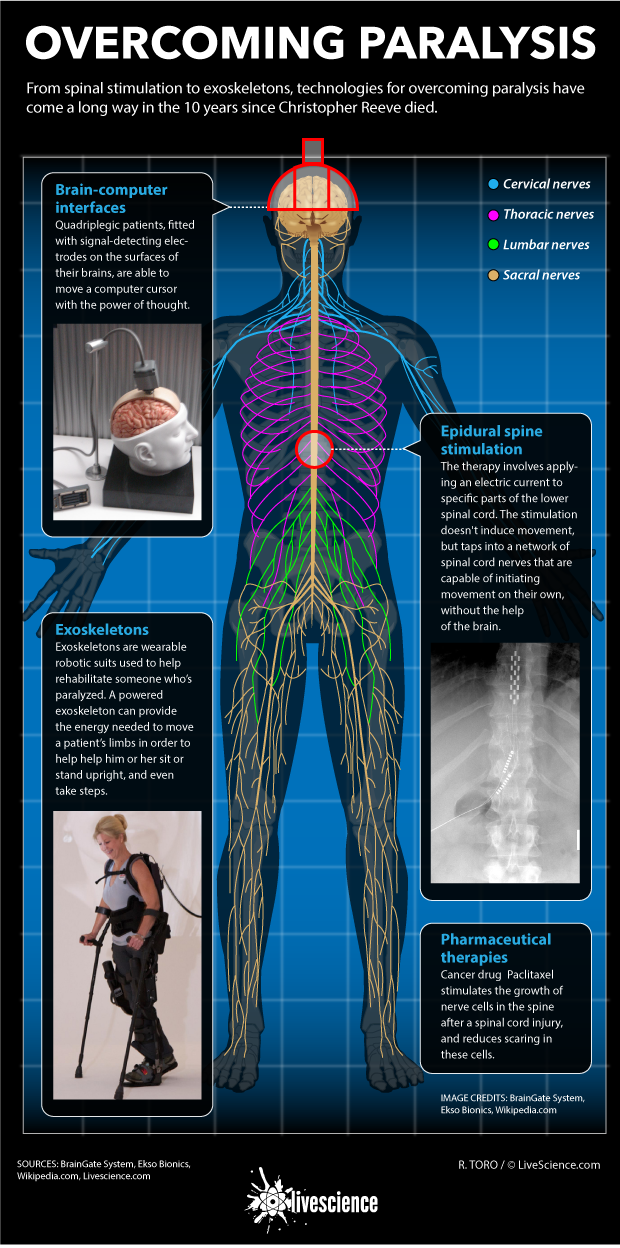Overcoming Paralysis (Infographic)

From spinal stimulation to exoskeletons, technologies for overcoming paralysis have come a long way in the 10 years since Christopher Reeve died. Quadriplegic patients, fitted with signal-detecting electrodes on the surfaces of their brains, are able to move a computer cursor with the power of thought. Exoskeletons are wearable robotic suits used to help rehabilitate someone who’s paralyzed. A powered exoskeleton can provide the energy needed to move a patient’s limbs in order to help help him or her sit or stand upright, and even take steps. The therapy involves applying an electric current to specific parts of the lower spinal cord. The stimulation doesn't induce movement, but taps into a network of spinal cord nerves that are capable of initiating movement on their own, without the help of the brain. Cancer drug Paclitaxel stimulates the growth of nerve cells in the spine after a spinal cord injury, and reduces scaring in these cells.
Sign up for the Live Science daily newsletter now
Get the world’s most fascinating discoveries delivered straight to your inbox.



